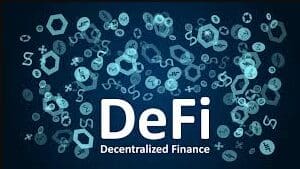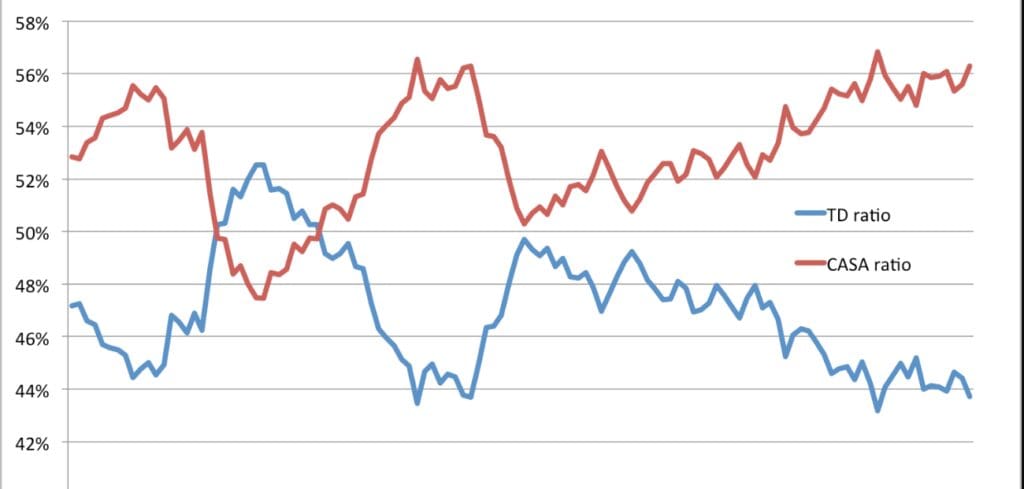This article will discuss the key risks of DeFi lending and its vulnerabilities like smart contracts, the volatility of the market, and regulations concerning liquidity challenges as well as possible manipulations of the oracle.
Taking note of these risks will help participants engage in safe and effective DeFi lending.
What Is DeFi Lending?
Lending within Decentralized Finance (DeFi) makes it possible for users to lend and borrow cryptocurrencies without involving an intermediary like a bank. It makes use of blockchain smart contracts which makes DeFi lending transparent, open source, and without restrictions.

With DeFi loans, lenders earn interest on their assets while the borrowers provide collateral in other cryptocurrencies in exchange for funds.
This form of borrowing takes place in a decentralized manner, which allows users to conduct financial transactions with each other without having to go through traditional finance institutions.
How does DeFi Lending Work?
DeFi lending strives to create an eco-system which is open-sourced, permissionless and transparent. Contrary to bank services, DeFi lending seeks to rely on peer-to-peer decentralized applications (Dapps) which lets users lend and borrow money directly. This lets cryptocurrency holders make significant amounts of money.
The lending processes in DeFi are relatively easy and straightforward as they seek to offer loans with the least amount of trust required. Users do not need to have faith in any intermediaries as they can easily lock their assets on DeFi lending platforms.
The borrowing process is also direct as lenders can get loans from peer-to-peer decentralized platforms straight away.
In addition, there are protocols that facilitate lending which enable earning interest on crypto assets. DeFi lending systems enable people to act as lenders and earn interest on the assets they can give out, similar to conventional banks.
Alternatively, people can also give assets out without any return on the interest accruing which removes banking system reliance. DiF lending also relies on lending pools, which is a collection of assets provided by users, along with smart contracts that makes sure the assets are equitably shared among borrowers.
While there can be several ways of distributing interest to those who invest, lenders need to make sure which type of interest is given. Each pool has a separate method of borrowing so there is no one loaning approach.
Top DeFi Lending Risks

The rise of peer-to-peer lending and borrowing has been made possible through the innovative concept of decentralized finance or DeFi. However, the lack of intermediates in this system comes with major risks. Below we outline the 10 major risks of DeFi lending and how to mitigate them.
1. Volatility Risks
With DeFi lending, borrowers use highly volatile assets like Bitcoin and Ethereum as collateral. Because of this, a sudden drop in the market can trigger liquidations, which leaves the borrower losing a significant amount of money. For instance, during the 2022 crypto market crash, multiple borrowers on Aave and Compound faced liquidations.
Mitigation Strategies:
- Limit the use of collateral to stablecoins so that exposure to price volatility is reduced.
- Keep collateral above the liquidation line by a significant margin.
- Make use of tools provided by DeFi protocols to monitor collateral in real time.
2. Smart Contract Vulnerabilities
Smart contracts run the risk of bugs and exploits. Automating DeFi lending helps reduce costs, but greatly increases the risk of loss. For example, the code was so poorly written for bZx that almost $1,000,000 was lost through smart contract exploits in 2020.
Mitigation Strategies:
- Choose platforms that have been audited extensively by third parties.
- Spread your investments over various protocols.
- Use well-known and trustworthy platforms such as MakerDAO and Aave.
3. Liquidity Risks
Defi lending faces liquidity shortages during market from stress as it becomes incredible difficult for lenders to withdraw money or borrowers to refinance their loans.

The sharp shift in the Terra ecosystem in 2022 exposed the risks surrounding poorly managed liquidity pools.
Mitigation Strategies:
- Keep track of the Total Value Locked (TVL) and liquidity ratios.
- Restrict the level of allocation to a single asset or platform.
4. Regulatory Risks
With DeFi’s active regions being blurry at best, any platform could be susceptible to legal changes. Take BlockFi for instance; in 2021, the company received a compliance breach charge and was forced to pay the U.S. SEC $100 million.
Mitigation Strategies:
- Research regulations in your area.
- Use compliant focused platforms.
5. Platform Risks
With low security infrastructure or poor protocol transparency, many DeFi platforms fall victim to rug pulls as well as hack attempts. The Poly Network hack in 2021 where hackers managed to abscond with $600 million highlights the importance of trusting platforms.
Mitigation Strategies:
- Review the background of the platform’s team.
- Allocate a small amount of funds for investment as a test of platform beliefability.
6. Impermanent Loss

Liquidity providers face impermanent loss in a scenario where the prices of the assets in the pool differ from the prevailing external market prices. For instance, a liquidity provider who accommodates a price range of 2x could potentially suffer a loss of 5.7%.
Mitigation Strategies:
- Provide stablecoin pairs as accommodations.
- Monitor the market regularly, withdrawing during stable periods, as conditions allow.
7. Flash Loan Attacks
Market manipulation could become a lot easier with flash loans as paying back the borrowed funds becomes possible within a single transaction.
PancakeBunny suffered a loss of up to $3,000,000 in 2022 because of a flash loan exploitation.
Mitigation Strategies:
- Steer clear of websites that have subpar security.
- Keep track of irregular movements within lending pools.
8. Oracle Exploits
The DeFi ecosystem utilizes oracles to obtain prices, which can be an issue because they are prone to manipulation. One such example involves inflating the value of tokens in order to exploit lending systems.
Mitigation Strategies:
- Use services that have a secure multi-oracle architecture.
- Watch for mispriced collateral.
9. Rug Pulls
The DeFi space can easily be faked by malicious actors looking to defraud unsuspecting investors. The case of Magnate Finance, which pulled the rug in 2023, came as a shock as they made away with $6,500,000.
Mitigation Strategies:
- Check project audits as well as the credibility of the developer team.
- Don’t gamble on projects that are overhyped and offer unreasonable returns.
10. Leverage Risks
In the DeFi realm, leveraging is a common way of borrowing and ensures high volatility in the market. The higher the leverage, the greater the chances of being liquidated in this unforgiving market filled with price tides.
Mitigation Strategies:
- Don’t be aggressive with the leverage you hold.
- Watch health factors as well as collateral limits.
Conclusion
In summary, although the space of decentralized finance (DeFi) lending has promising prospects, it has unique risks that have to be taken into consideration.
With the different risks to tackle, participants have to be aware of smart contract risks, market risks, regulatory risks, liquidity risks, and even oracle attack risks.
When it comes to mitigating these issues, individuals can perform extensive research, spread their investments, monitor new regulations, and even choose well-known brands to operate more efficiently within the complex world of DeFi lending. Doing this might reduce the risks associated with DeFi lending and fully benefits from them.










